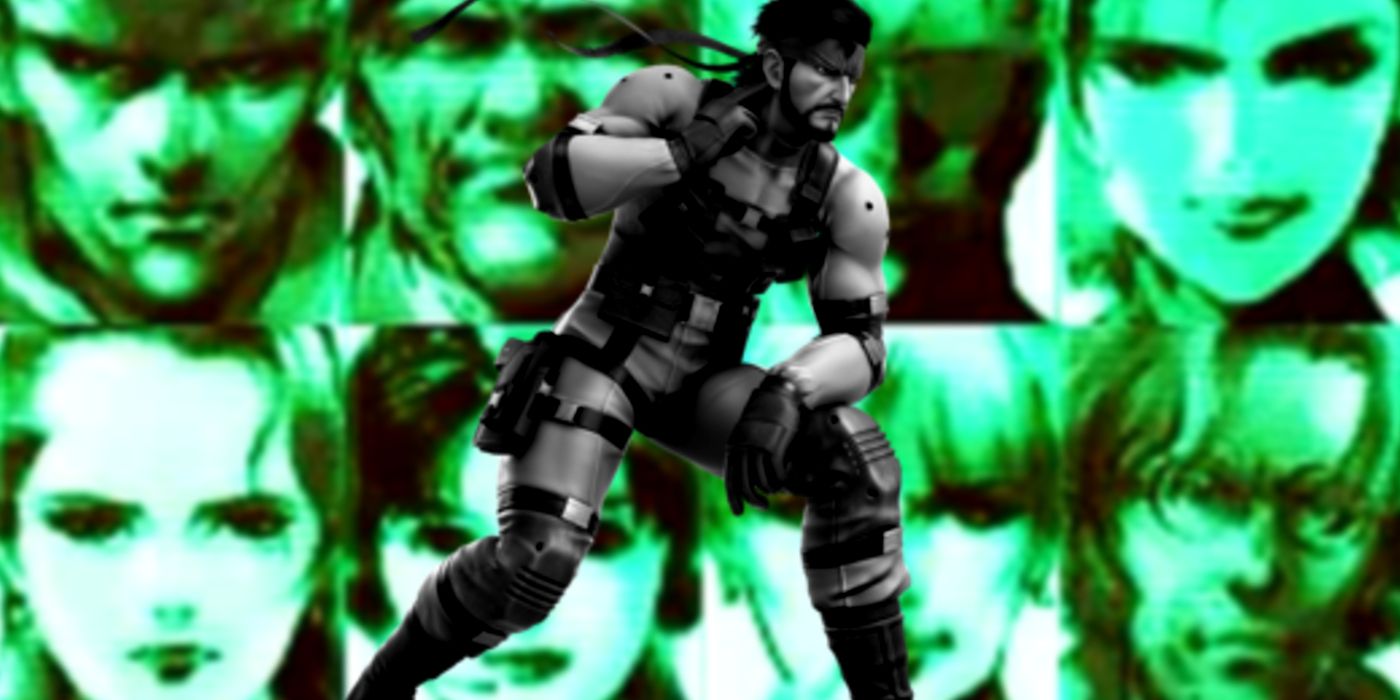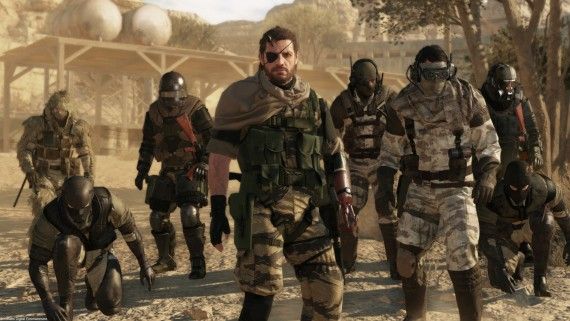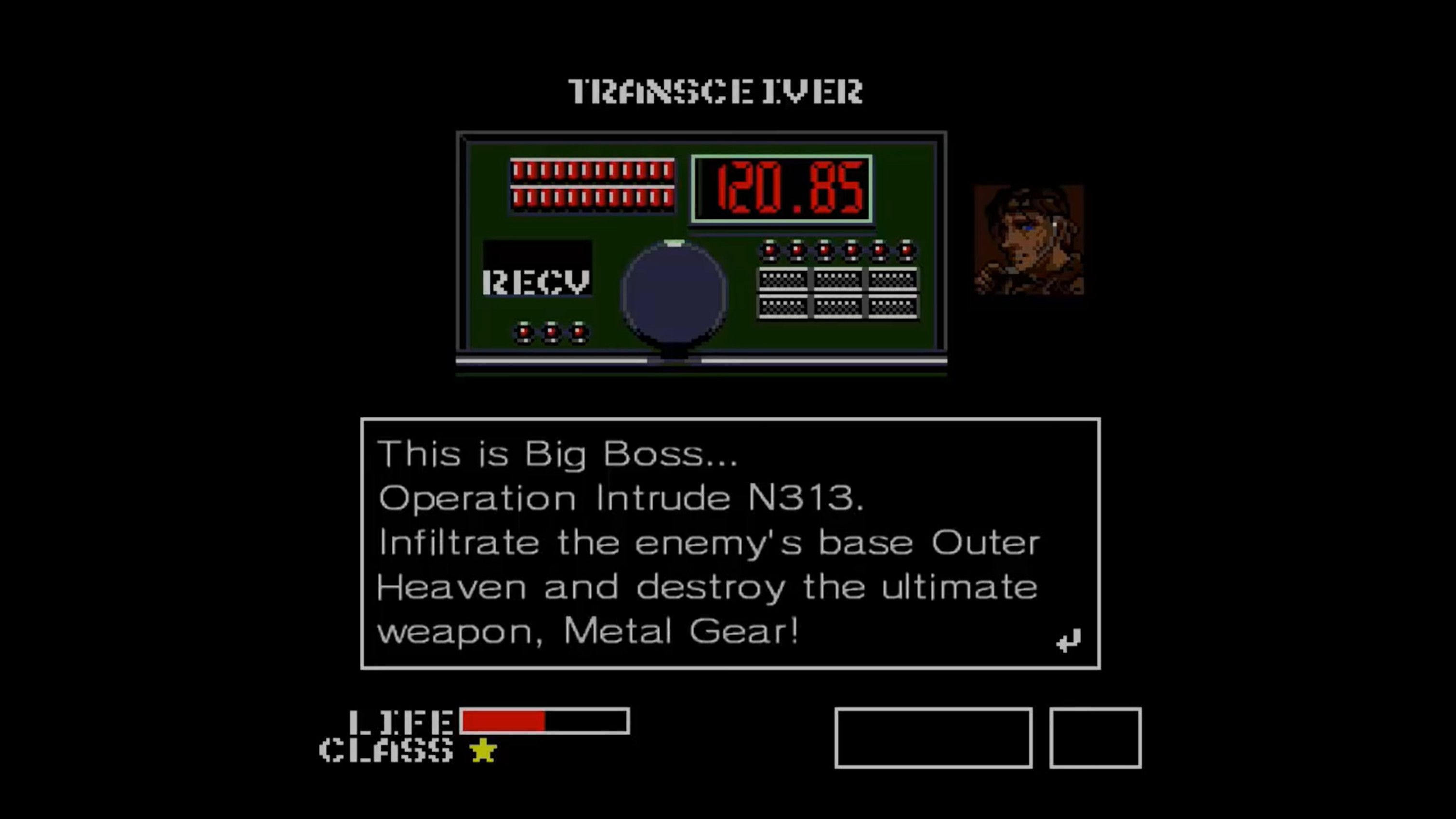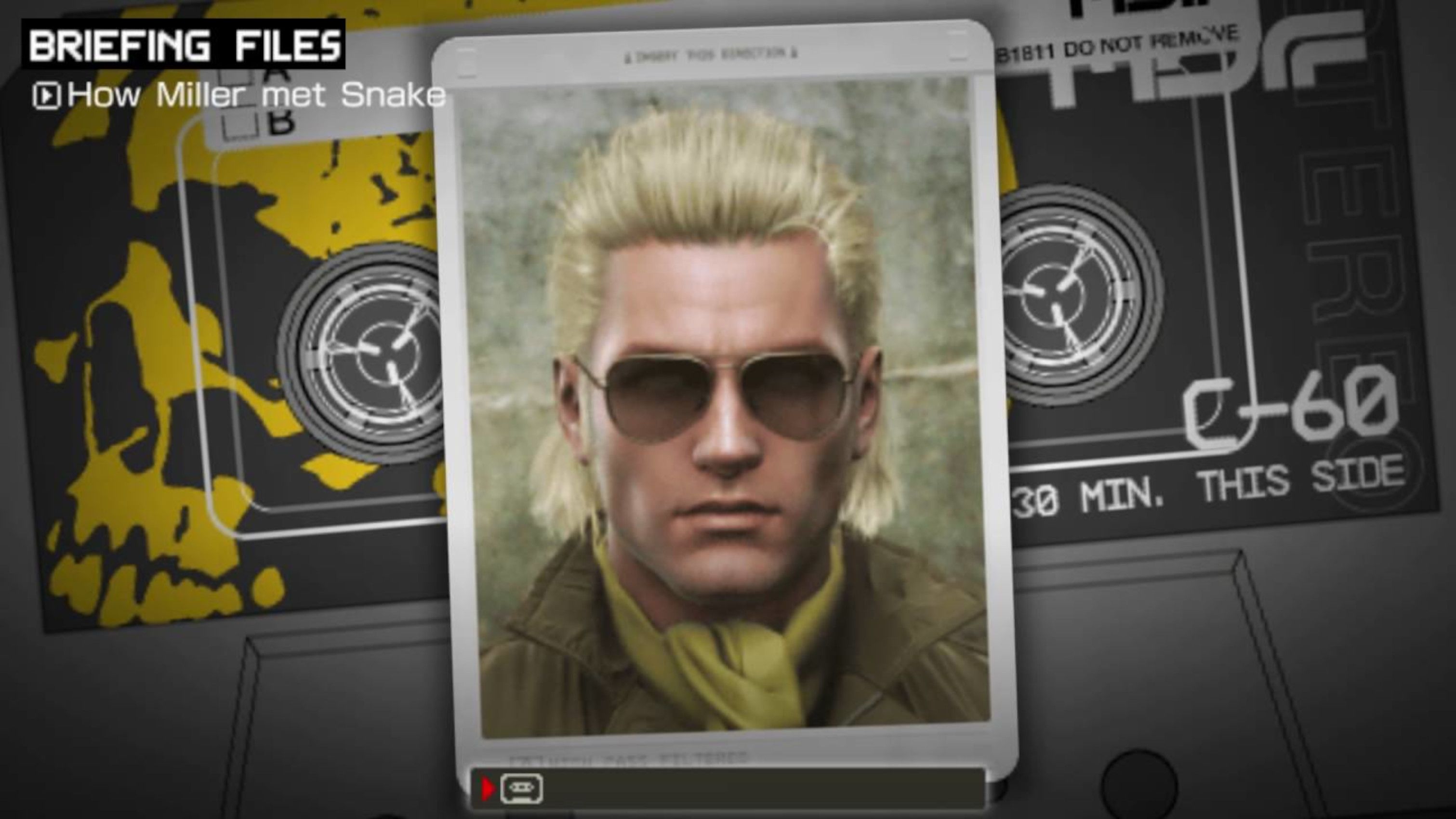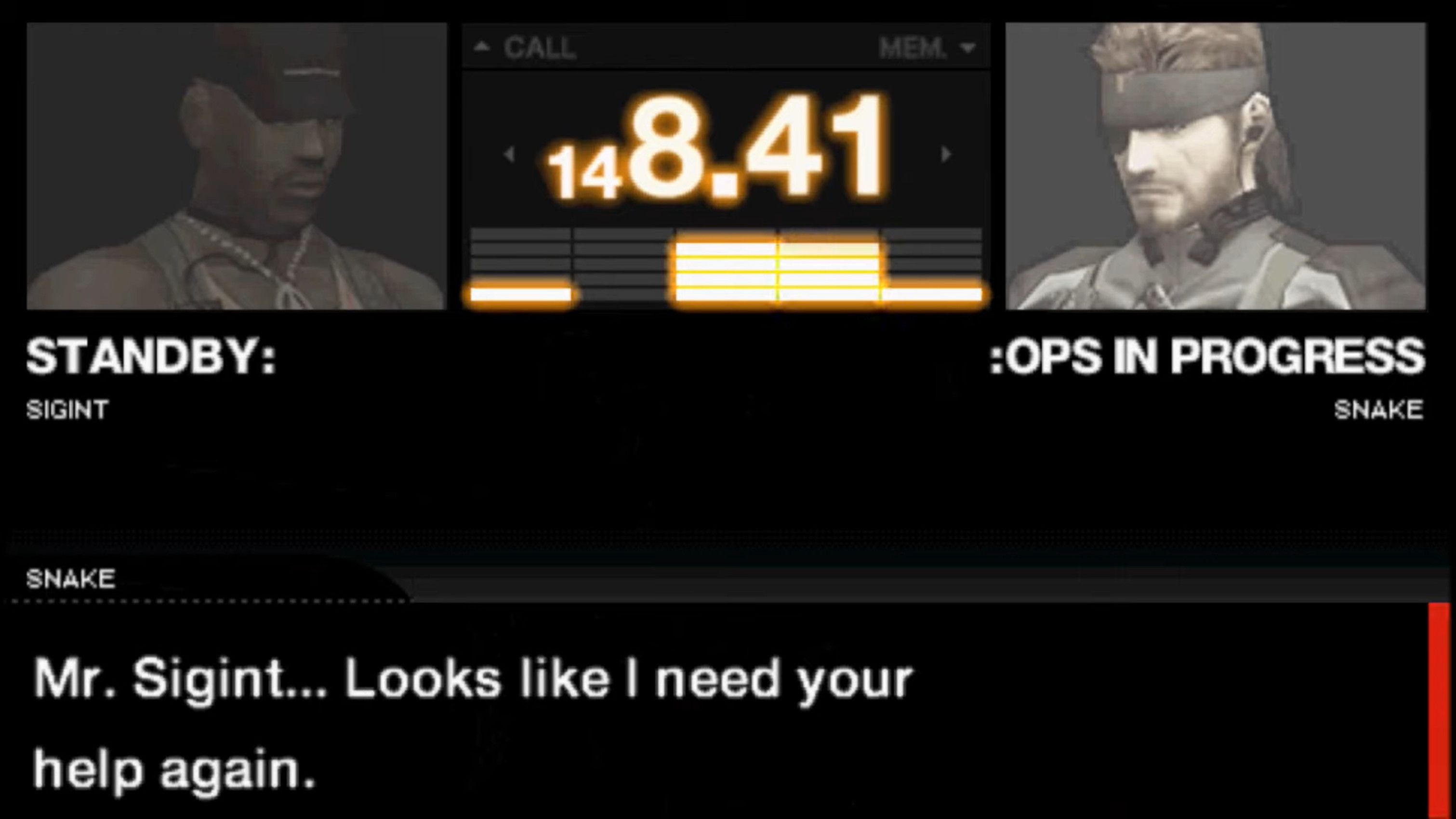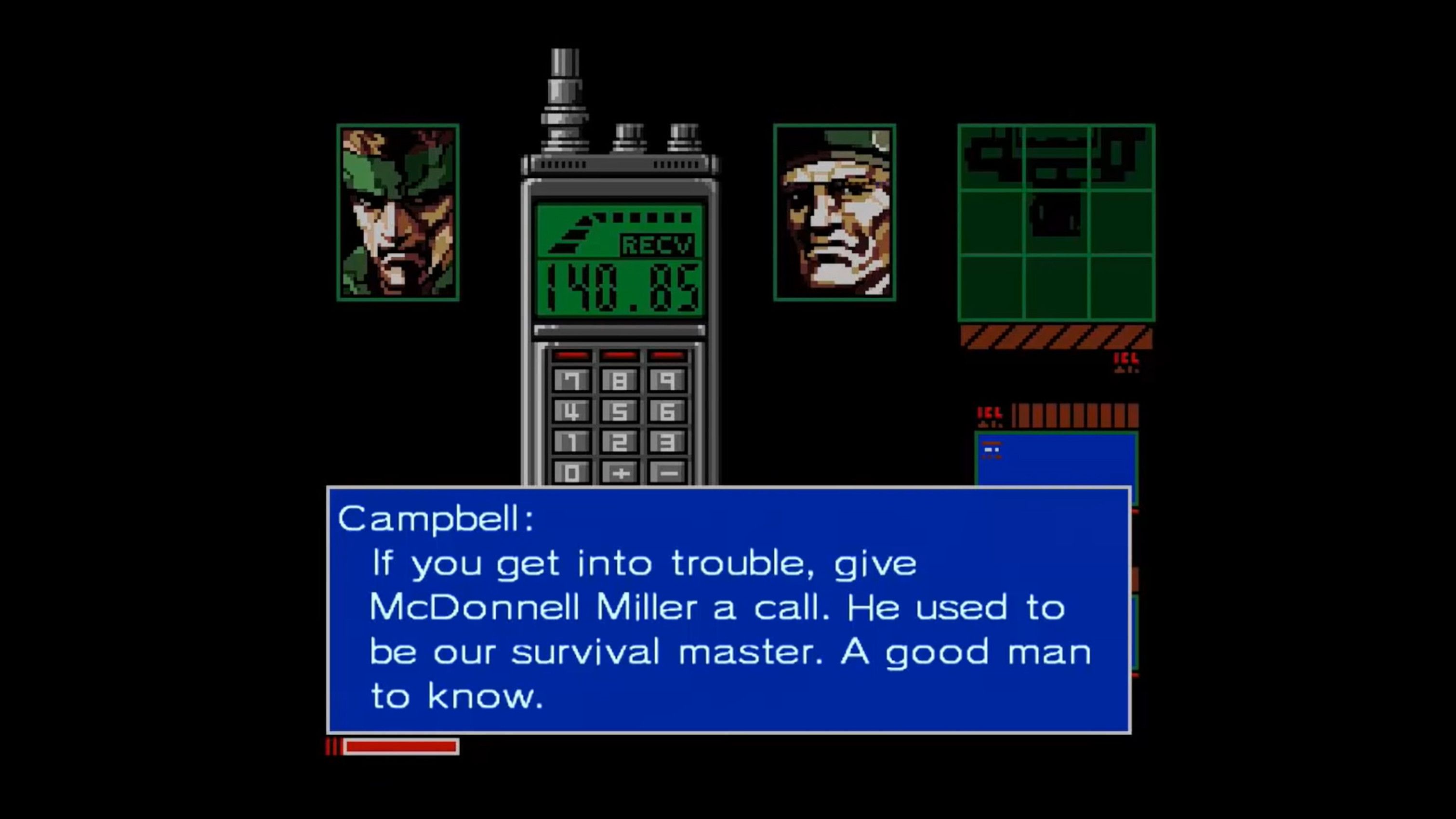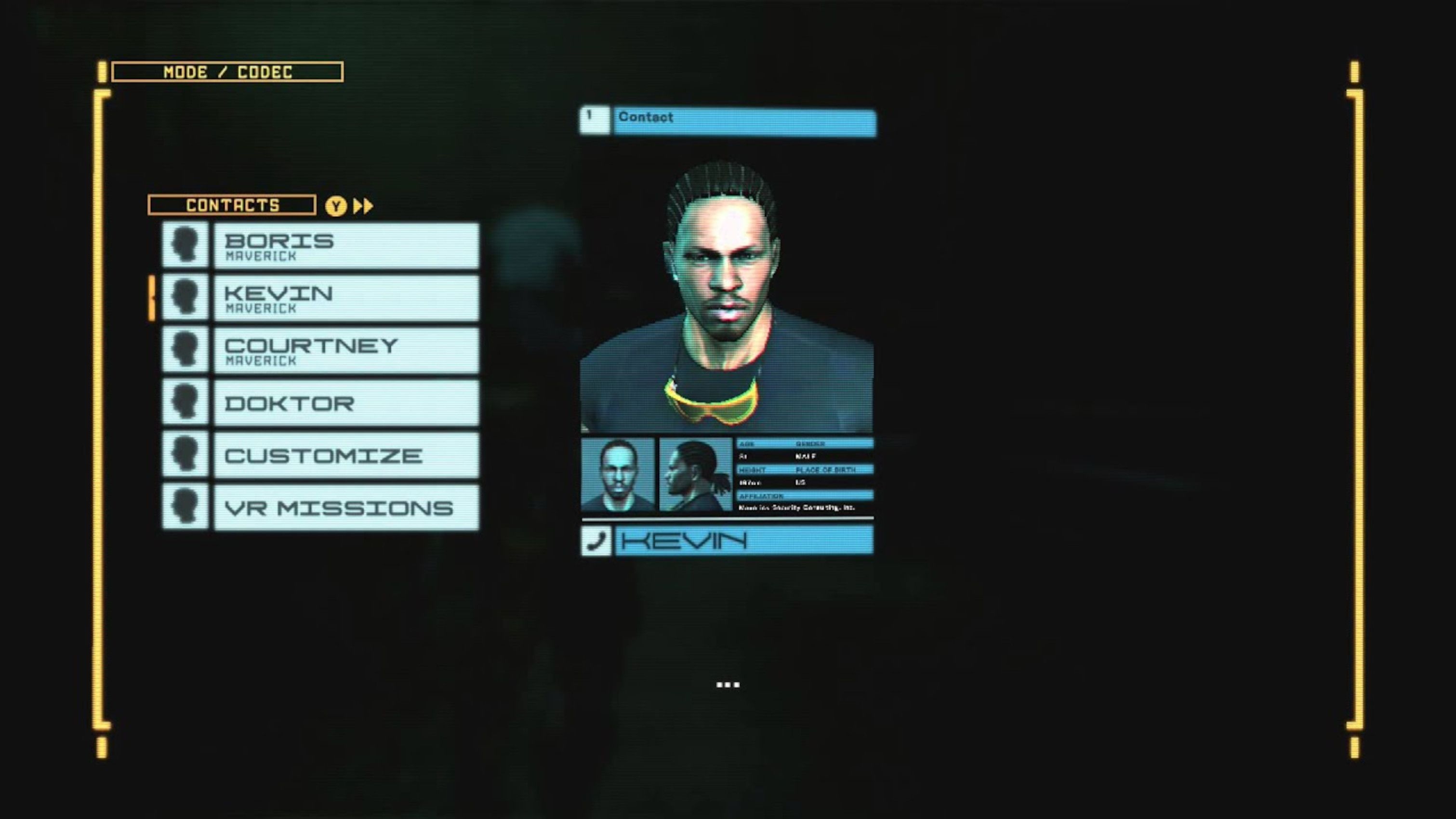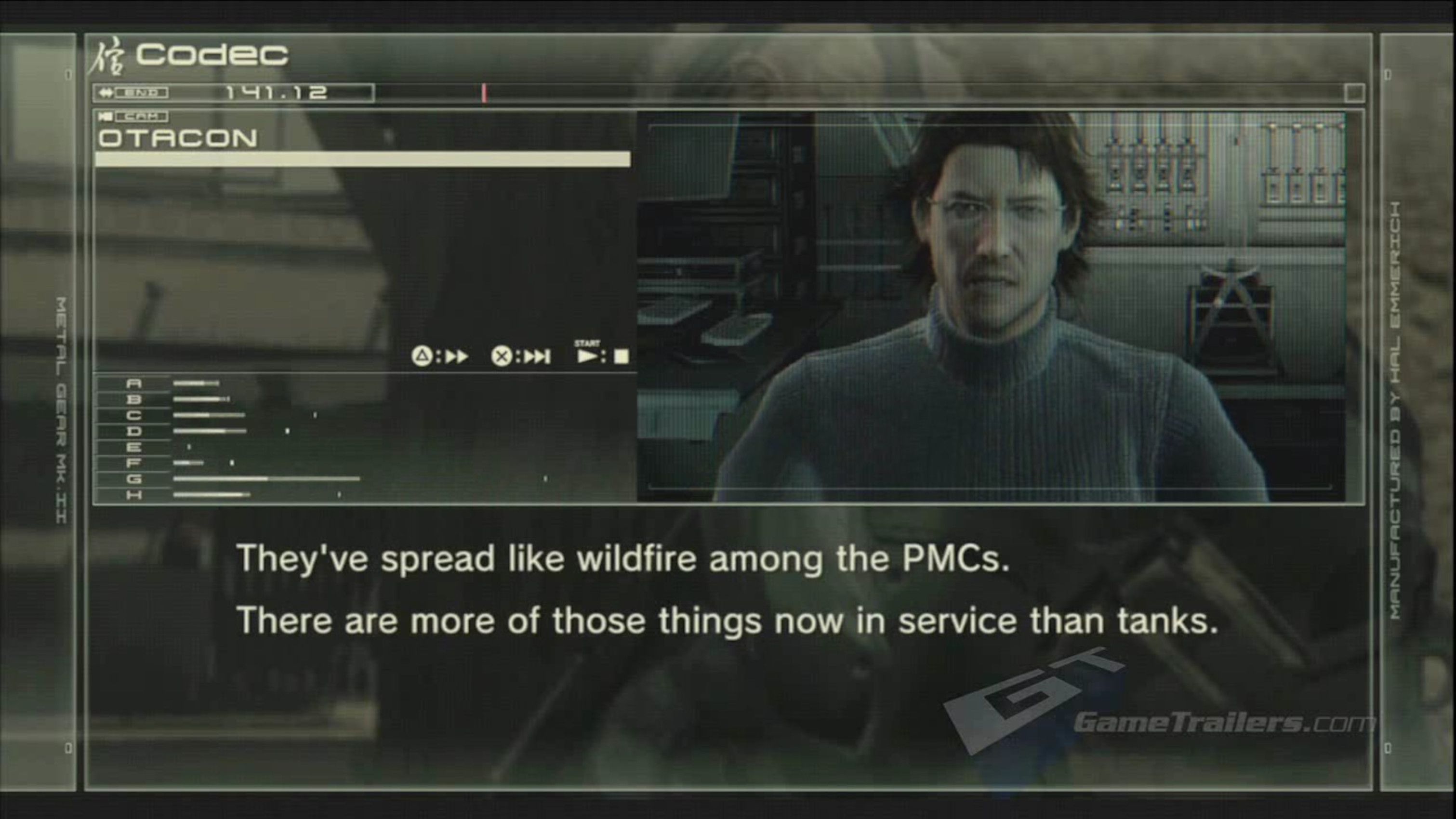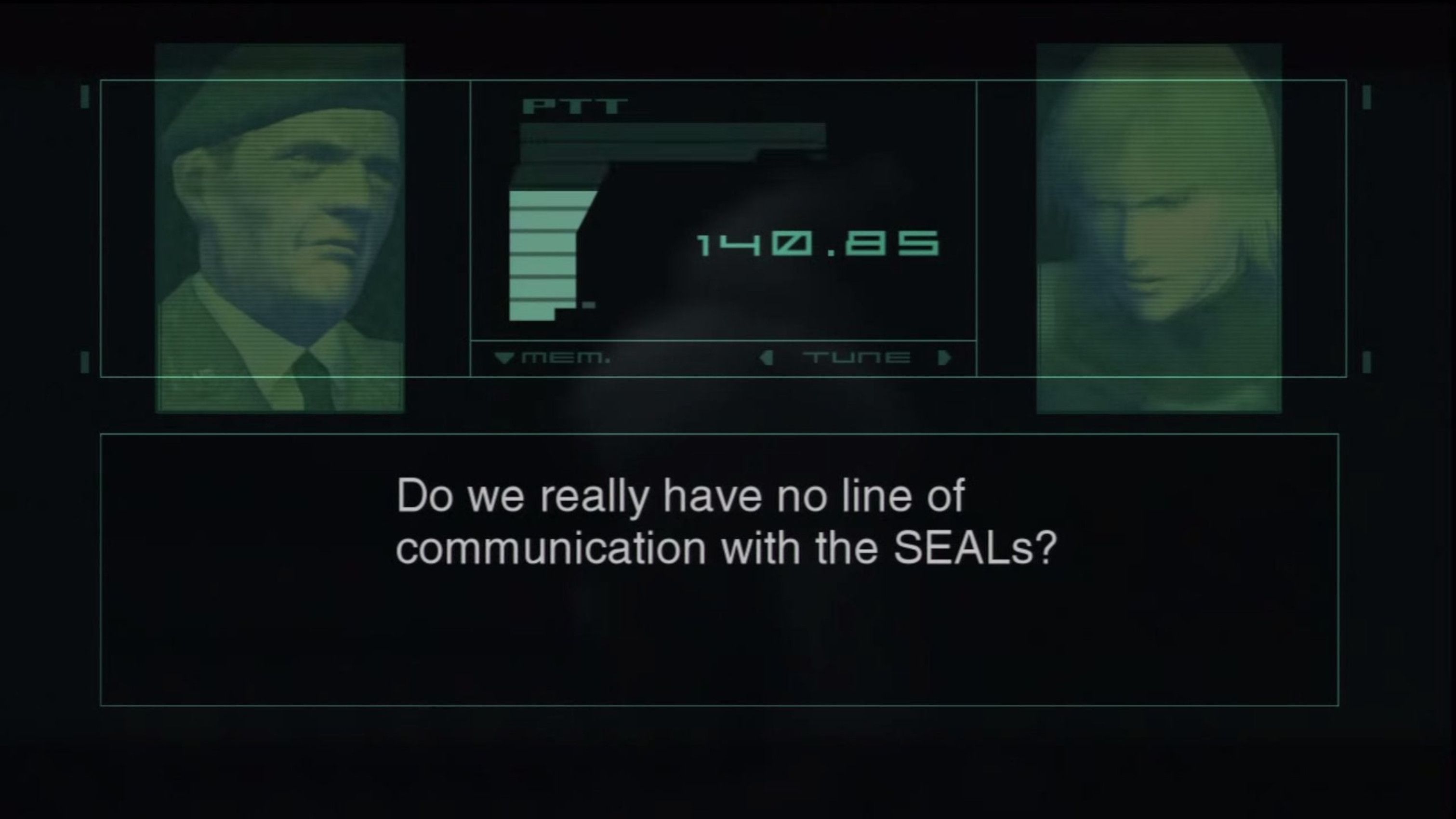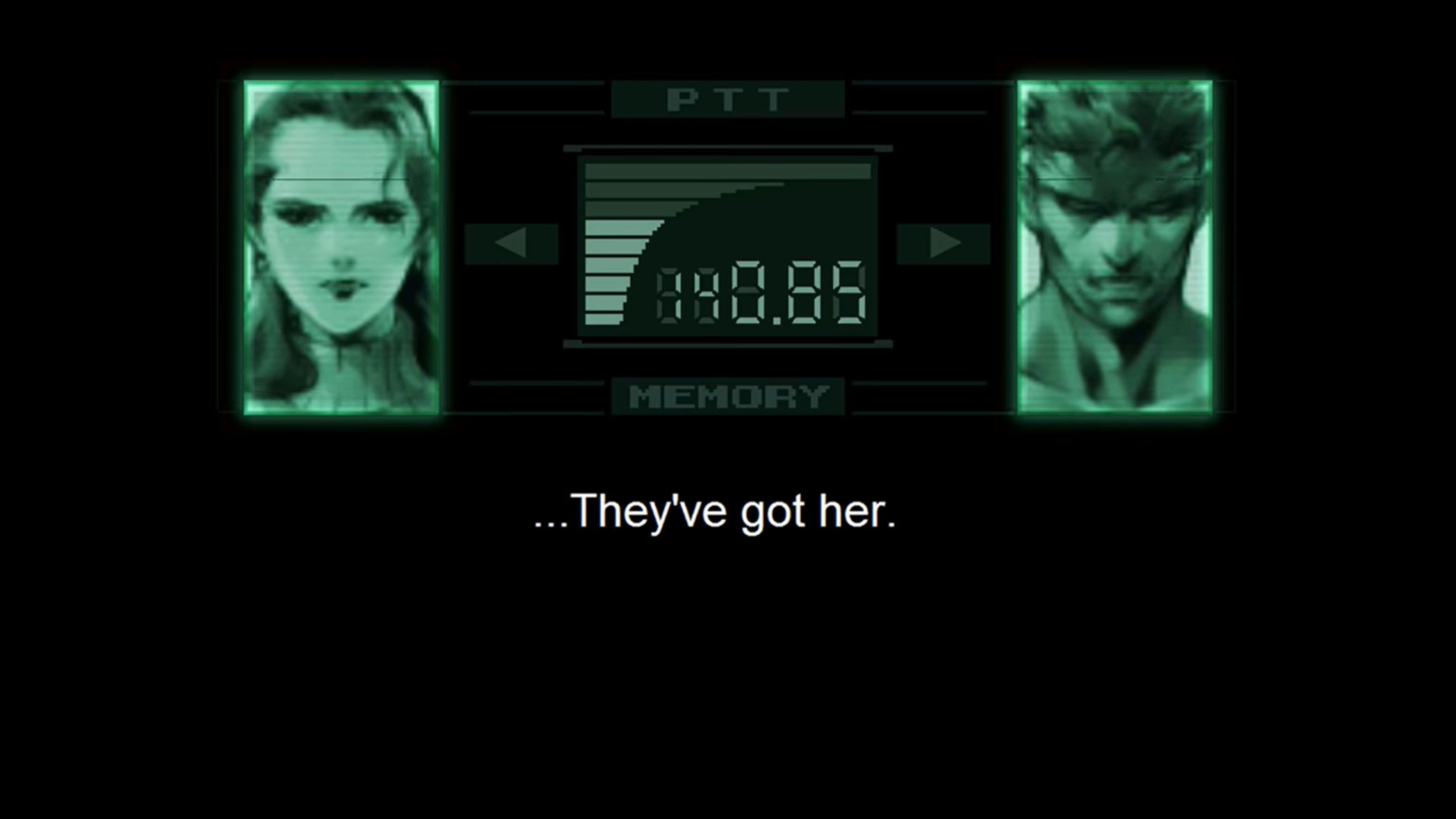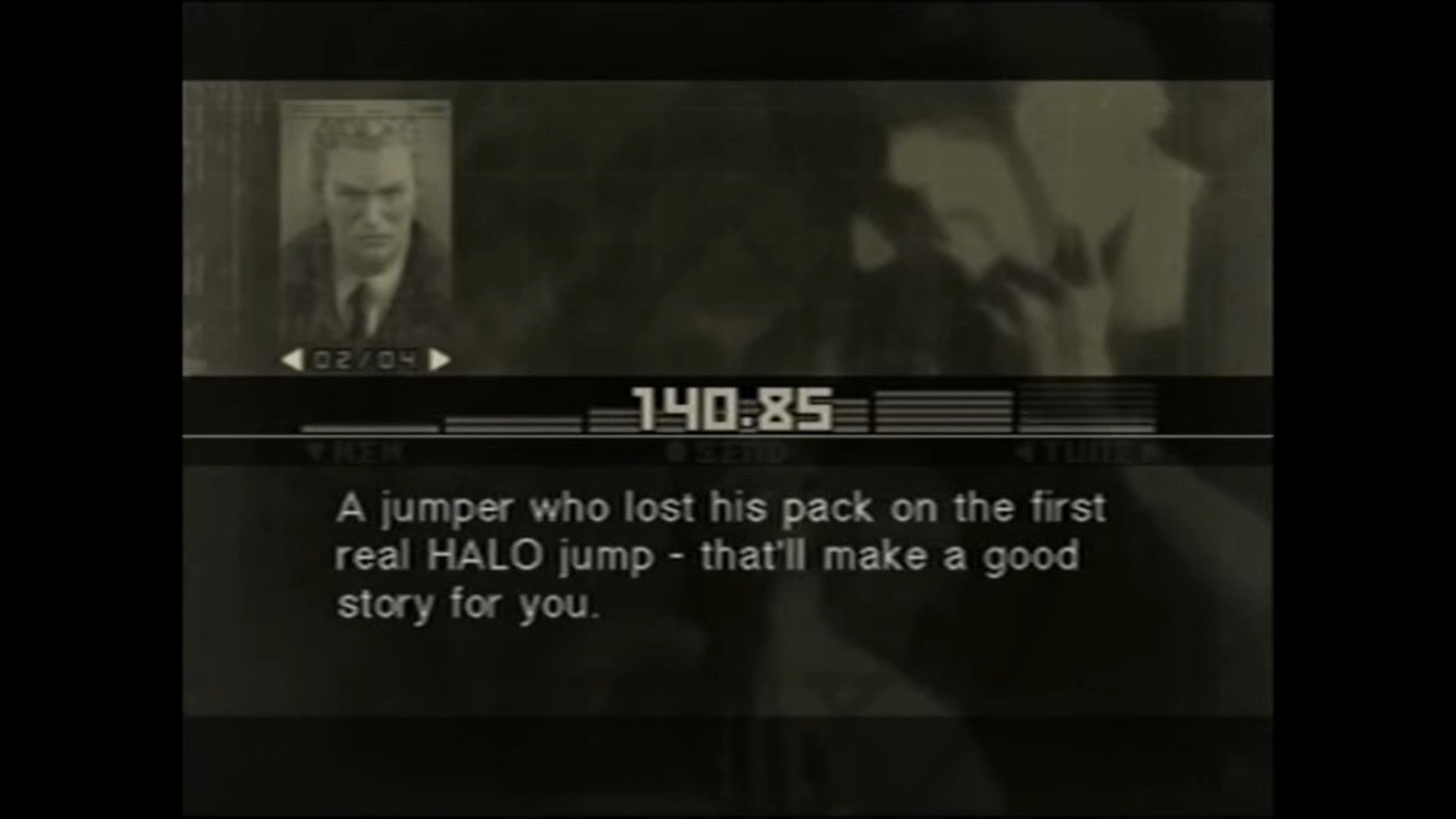The Metal Gear series has created some of gaming's most iconic side characters. From Revolver Ocelot to Otacon, there's no shortage of interesting, unique personalities to assist the player on their mission. Plenty of the most compelling interactions with these characters are in the series' radio/codec sequences. Unfortunately, not all of the Metal Gear codec support teams are created equal.
Metal Gear's codec has been around since the series' origins way back in 1987 on the MSX. In fact, the first interaction the player has with any character is when Big Boss dials Solid Snake up on the transceiver to brief him on his mission to infiltrate Outer Heaven. Since then, the codec interactions between characters have been integral to both the series' gameplay and story. In most Metal Gear games, players can ring up various characters on the codec at any time. Depending on the situation the player is in, members of their codec team will offer advice or provide commentary. These interactions range from humorous to deeply philosophical, as the characters reveal everything from their personal interests to their backstories. Other times, there are required codec sequences which drive the plot forward through lengthy, dramatic dialogues. In totality, the codec system was a brilliant way for the developers to inject humanity in a series that, despite being full of characters, frequently has extended periods where the player is isolated and surrounded by silence.
Much to the chagrin of the plot-oriented gamer, however, not every game in the Metal Gear series has an amazing codec team. Sadly, many don't even have great codec systems. This alone does not make these titles bad, obviously, but it does make them lacking. Something about the codec system has become a necessary part of the Metal Gear series' identity. Without some decent codec sequences, characters lose a layer of their humanity, and therefore their relatability. The more stripped down the system, the more unengaged the interactions between characters become, and the less the games feels like something that belongs in the Metal Gear universe. For that reason, it is a worthwhile endeavor to rank each major title in the series by its codec team. After all, why play a game when one could listen to it?
10. Metal Gear Solid V: The Phantom Pain/Ground Zeroes
MSG5 is undoubtedly the most polished title in the series when it comes to gameplay. No other mainline Metal Gear title controls so well or allows the space for so many different strategies. Unfortunately, when it comes to character and story, the game fails to deliver. Aside from the main story being unfinished, or the main character losing all of the personality traits that made fans fall in love with Big Boss, the radio/codec sequences are virtually nonexistent. Instead of the classic codec menu, where players input a specific frequency to contact a certain character, the player just has to press the left bumper to call up Kaz or Revolver Ocelot. Usually they provide some dry one-liner to provide extra context or make a comment about whatever Venom Snake is looking at. It can't even be qualified as an interaction, because Snake never talks and the things they say are rarely helpful. To make things worse, the voice acting for both characters in these calls is extremely bland. Both Kaz and Ocelot speak with a dull, monotone texture to their voices. Half the time it can be difficult even recognizing which of them is speaking.
The game tries to make up for this by including audiotapes that the player can listen to on their iDroid, but it just isn't the same. Ignoring the fact that the final act of the game's plot is almost entirely delivered via these pre-recorded tapes, they don't have that same live quality that the codecs did. When a player rings up someone on the codec, and the interaction they receive is specifically tailored to their situation, it really feels like the support team is helping Snake in real time. The tapes are just too disconnected, even if some of them do deliver humorous anecdotes like "The Hamburgers of Kazuhira Miller."
9. Metal Gear (MSX)
This is where it all began. Pretty much every mechanic that exists in later Metal Gear titles can be traced back in one way or another to the original 1987 release, and that includes the codec. The codec sequences for this game aren't as expansive as later titles, and lack the enchanting personalities that make sitting through a 20-plus minute conversation between two still images bearable. Still, they do usually give the player some useful information. Characters consistently provide Snake with some kind of advice, even if it is only two or three sentences long. It's nothing fancy, and it only marginally earns a place above MGS5 simply due to the fact that it's an actual codec system.
8. Metal Gear Solid: Peace Walker
Much like MGS5, Peace Walker replaces its live codec with a one-liner radio system. It's a lot more varied in this case, with more than just two characters providing commentary, but it's still not a fully-fledged codec.
It feels about as empty as MGS5's because of the lack of any meaningful interactions between Snake and his team, and is only marginally better because of the character variation. This title also tries to fill the gaps with the same kind of pre-recorded tapes that the player can listen to at Mother Base. These are all very interesting in their own way, but they are still no replacement for the traditional codec.
7. Metal Gear Solid: Portable Ops
This semi-canon PSP title didn't have a ton going for it in any one regard, and its codec sequences are no exception. It does fill the story gap between MGS3 and Peace Walker in a satisfying way, but most of that has nothing to do with the codec sequences. Even MGS5's and Peace Walker's tapes are more enjoyable in many ways. Still, it is a proper codec system this time around. The player can see portraits of both speakers with subtitles at the bottom and everything. Unfortunately, none of these sequences are voice-acted, so they lose a lot of their personality. On the bright side, the codec team is the same beloved group from MGS3, so it's likely that fans of Snake Eater will get a kick out of seeing more Para-Medic, Sigint and Major Zero.
6. Metal Gear 2: Solid Snake
Here's where things start getting really good. The second Metal Gear game expands greatly on the codec system established by its predecessor. In fact, the whole plot is much more substantial in almost every regard. There's real drama that unfolds between the characters, and despite the limitations of the MSX, it really does deliver. Much like Portable Ops, the game could gain a lot of personality by having its codec sequences acted out in some way, but the improvement in quality between this game and the first Metal Gear is enough to garner a fair amount of admiration. This is also the title where players are introduced to iconic characters like Roy Campbell and Kazuhira Miller, so it carries the same sense of character nostalgia that fans of MGS3 would have for Portable Ops.
5. Metal Gear Rising: Revengeance
Without a doubt, Metal Gear Rising: Revengeance's codec team is the most underrated in the series. Unfortunately, that's mostly for the same reason it's so low on this list. To put it simply, they're only outdone in uselessness by Kaz and Ocelot in MGS5 because MGR is not a stealth action game. Because the game is less focused on exploration and solving puzzles, players aren't incentivized to give their codec team a call every now and then. When almost every problem in the game can be solved by slashing enemies to bits (as fun as that is), the challenge becomes less about figuring out what to do and more about doing the same thing more efficiently.
Once a player takes a step away from the game's combat, however, they'll find that Metal Gear Rising's codec team is top notch. Each character is unique and has a loveable personality. It's fun to hear Raiden talk history with Boris or to hear Courtney ramble about her favorite foods, or even to hear the Doktor give Raiden crash courses in biomechanical engineering and the finer points of transhumanism. Despite how different MGR is when it comes to gameplay, its characters and story fit right in with the world of Metal Gear, and the codecs do an amazing job of selling that. It's such a shame that they really aren't an integral part of enjoying the game.
4. Metal Gear Solid 4: Guns of the Patriots
MGS4 spares no expense at celebrating the previous games in the franchise. After all, it was supposed to be the last game in the series. That's why almost every member of the codec team is copy-pasted from MGS1 & 2. As a result, MGS4's codec team is a lot like MGS1's, and is even better in some regards. A lot of the characters that seem less necessary in MGS1's team are gone, so pretty much every contact serves a purpose in some way or another. What puts MGS4's team lower on the list however, is how it relies on nostalgia instead of novelty to get by. A lot of the conversations in MGS4 have to do with things characters accomplished earlier in the series. On top of that, there's fewer codec sequences than any other game in the Solid series. As a result, MGS4's predecessors each manage to outshine it in some way or another.
3. Metal Gear Solid 2: Sons of Liberty
Metal Gear Solid 2's codec team may not be as iconic as the teams of MGS1 or MGS3, but it is one of the best. Most of the reasons behind its quality go pretty deep into spoiler territory, but no other codec team misleads and speaks directly to the player quite like MGS2's. Both the player and the protagonist spend the whole game thinking they're talking to Roy Campbell and Rose, only for the game's final twist to reveal that neither character has been the real deal the entire time. They're both autonomous AI programs that have been secretly manipulating the game's events from the very beginning.
As Raiden's conversation with these AI progresses, they discuss elements of the oncoming internet age that eventually follows MGS2's real-world release with frightening detail. Forget all of the humorous side interactions and helpful advice (though the game has no lack of these), few dialogue scenes in all of gaming have ever provided so much forward-thinking social commentary with such gravity. The final hour of MGS2 is dripping with fourth wall-breaking, hauntingly poignant codec conversations that apply to the real world in a meaningful way. Almost two decades later, and these conversations have become no less observant. MGS2's codec team may not be the best overall, but they are easily the best at making the player think about how they should live their actual lives.
2. Metal Gear Solid
It's not inaccurate to say that the Metal Gear series really doesn't come into its own until the first Metal Gear Solid. So much of what is established in the MSX games is brought to the next level once the developers made the switch to the PlayStation, and Kojima's relentless desire to pursue cinematic storytelling in video games could be brought to fruition. To this end, MGS1's codec team is everything that a good codec team should be. Each character, from Mei Ling to Otacon feels unique and alive. The newly-added voice acting brings a level of authenticity that makes the extended dialogue sequences bearable as each character's personality is brought to life.
The advice they give is almost always helpful when solving the game's puzzles, and the commentary they provide is almost always interesting. If one were to play a Metal Gear game solely for the codec sequences, the first Metal Gear Solid would not be a bad choice. The only thing keeping it from being the number one spot is that not every member of the team feels integral to the story. There's not a whole lot of reasons to dial up Nastasha or Miller (though Miller is important) and they typically don't involve themselves in required sequences like a lot of other characters do.
1. Metal Gear Solid 3: Snake Eater
There's a reason Snake Eater is widely regarded as the fan-favorite across the entire series, and a healthy amount of that clout has everything to do with the lovability of the game's characters. Every single character on the codec team is brimming with a unique and enchanting energy that makes players want to call them again and again. Whether it's learning about old B-movies and the local wildlife with Para-Medic, nerding out over guns and tech with Sigint or receiving harsh lessons about the battlefield with The Boss, it's all wonderfully written and voiced. Nothing breaks up the monotony of belly-crawling through the fictional Russian rainforest of Tsalinoyarsk than dialing up Para-Medic to talk about James Bond, only to have Major Zero interject with his strongly-held opinions on the subject. The codec team in Metal Gear Solid 3 are more than just Snake's backup, they're his friends, and that feeling of camaraderie is felt just as strongly from the player. That's something that no other Metal Gear game really accomplishes.
Nearly every mainline Metal Gear game has its fair share of memorable codec moments, especially if one counts the pre-recorded tapes of MGS5 and Peace Walker. They contribute just as much to the series' identity as the stealth-action gameplay or the twisting, mind-boggling plotlines. In fact, heavily influence how well those elements work for the player. When a player is stuck on a puzzle, when they can't figure out what the hell is going on in the game's story, or even when they just need a break, the codec team is there to lend a hand. Without that extra layer of characterization, the games lose much of their humanity, and that's what makes Metal Gear such an amazing series. It undoubtedly appeals to the player's humanity.

